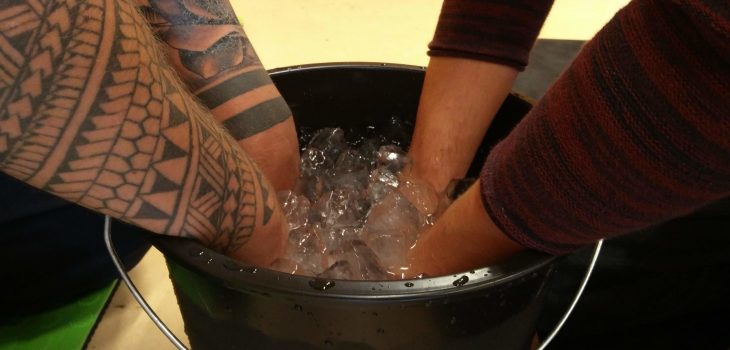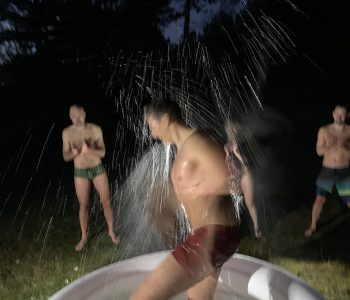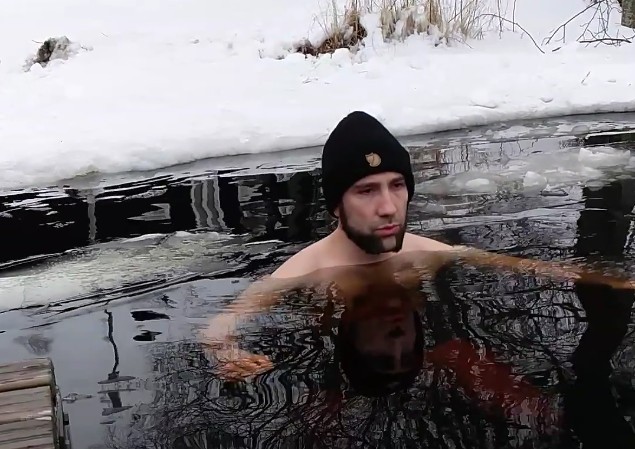 Wim Hof Method
Wim Hof Method What to do against cold feet
Whether you practice the Wim Hof Method or not, you might struggle with cold hands and feet. If that’s the case, read on. I’ll show you how to improve that.
I (still) get cold feet
Many practitioners of the method, fresh and seasoned alike, struggle with cold hands or feet.
Many non-practitioners, too. Actually many practitioners started to improve that hand/foot situation.
Your feet could be cold after cold exposure, or just throughout the day.
This is not unbeknownst to myself. When I was half-way through my instructor class I was still struggling with cold extremities after every ice bath.
As an avid practitioner of the method I did what I thought would cure it: do more cold showers, do more cold dips in icy water outside. At one point the extremities must get used to the cold, right?
But nothing changed.
Sometimesone of my toes would stay white for hours, even though the rest of my body was perfectly warm.
So I took some courage and asked Douwe. At the time, Douwe taught the instructor master class. And I’m glad I did. Because what he said was a bit surprising for me.
Ice baths don’t help against cold feet
Well, they do a little bit, but ice bath’s are not quite the best tool to free yourself from what feels like icicles at the end of your arms and legs.
When you step into an ice bath, your whole body goes into survival mode. Homeostasis, trying to keep the body core temperature at 37 degrees. Your body does all it can to keep the core with all your vital organs warm. Your heart, your lungs, your kidneys, your liver.
One of its most effective tricks to keep your organs warm is to keep most of the blood in the core.
Which means that it pulls all the veins in your arms and legs tight. They are supposed to get cold in the cold. I mean, in terms of survival, what does it matter if you loose a toe or a finger? (please don’t stay in the cold long enough to put it to a test)
So in a full-body immersion, you teach your blood vessels in the extremities to constrict and get cold. Your body is too busy surviving to care about your extremities.
And even when you warm up, the hands and feet come last.
So while ice baths do train your whole body, including the extremities, it’s a lot if your main trouble zones are hands and feet.
What does help against cold feet
Let’s approach this from another angle. When you body is warm, but your feet are cold, a well functioning body will send nice, warm blood to the feet if it is safe. So in your winter boots or when you come home into the warmth there is no physical reason for cold feet.
For various reasons, for many of us that’s not how it works. Yet.
Even when you’ve warmed up after an ice bath, your feet and hands may stay cold.
Even when you’re snuggled up with a hot-water bottle under blanket, your feet are cold.
So for some reason, your body does not know how to open up you hands and feet.
The training plan for cold hands and feet
You can use cold to counter cold feet.
We want to train the blood vessels in our extremities to constrict when it’s cold, but also to open up again when it’s safe to do so.
Basically train our body’s natural response to temperature changes.
And temperature changes is what you can use for the training.
You need:
- a bucket with ice water
- a bucket with luke warm water
It’s important that the second bucket is just luke warm. Body temperature. Not hot.
And our training process looks like this:
- put your hands (or feet) into the ice water. A minute or two is a good starting point.
- move them into the bucket with warm water until they feel “warm” again.
- Repeat.
I’d suggest to put all your focus into this exercise and use your will power to warm up your hands in step 2, and induce vasoconstriction in step 1.
Use your breath in step 1 to relax your body. Long exhales through the mouth, and try to relax your shoulders, arms and back.
You can repeat for as long as you can keep your focus.
If you do this a few times per week you will quickly experience improvements.
And never get cold feet again.
Much love
~Marius






2 COMMENTS
Hi Marius,
I’ve just been reading Wim Hof’s book and consequently, I have now tried 3 times on consecutive days, the cold hands method with ice and water as suggested by Wim Hof and with breathing.
I have Reynaud’s problems and I am hoping this might help the problems with bad circulation and vasoconstriction. The first attempt I got a painful ache inbetween my shoulders, and soon lost the warmth gained to return to white fingers. The second attempt the hands felt ok.
Today after the 3rd attempt to immerse my hands in icey water I have noticed a few small chilblains appearing.
I am a little concerned about these little chilblains occuring, so thought after reading your recommended approach with ice and Luke warm water I would try this method? I would appreciate your comments and guidance?
Thanks for listening.
Janey
I’ve been practicing WHM for about 6 years, Immune system excelent, but right now I have some chilblains in my fingers, it takes about 2 weeks to get better, this always happens at the beginning of winter here in South Brazil. I’m 45 y.o with 13% body fat (65Kg) I do these icy cold water dips (3….5°C) for my feet/hands, but I don’t alternate with lukewarm water, but I’ll add that, thanks.
Detail: Hypothyroidism certainly interferes cause my normal basal temperature is 35.5°C. It’s right?
After a cold (icy) shower + 10 min horse stence my temps goes to 34.4°C. I’m sure thats decreased to 33°C. Wim Hof says to not let drop the core temp below 35.5°C…How not to drop below 35 if I live in 35? Any helpful guidance please? Thank you.
– Janey, do you have Hypothyroidism or low body basal temperature like me?